 Art Ed: Sheepskin Ain’t Cheap No Mo
Art Ed: Sheepskin Ain’t Cheap No Mo
With the fall semester already underway in many colleges, universities, and art institutes, teaching and learning occupy the foreground once again. Though I find myself in a classroom only intermittently nowadays, education proves an enduring subject of interest to me. So I try to keep abreast of developments, not only in photo education and, more broadly, in art ed, but the entire spectrum. As the twig is bent.
 Beyond listening to a presentation on teaching photography in a for-profit college given at the 2014 Society for Photographic Education National Conference in Baltimore by Colleen Mullins, a former Penland workshop participant of mine, I must confess an embarrassing ignorance concerning not just photo programs based in such institutions but the entire for-profit college-level art-education business.
Beyond listening to a presentation on teaching photography in a for-profit college given at the 2014 Society for Photographic Education National Conference in Baltimore by Colleen Mullins, a former Penland workshop participant of mine, I must confess an embarrassing ignorance concerning not just photo programs based in such institutions but the entire for-profit college-level art-education business.
Since the early 1970s I have written regularly about photo education from pre-K-12 on through post-secondary levels, but have never thought to look into the for-profit school phenomenon per se. Circa 1970, so far as I was aware, the for-profit post-secondary education industry concentrated mainly on fields involving definable, practical skill sets in high-demand sectors: medical-office management, information technology, and such, basically an extension of the voc-tech high school.
Some of them specialized in applied photography (Brooks Institute, for example) or offered curricula in aspects of professional photography, but these were few. I saw those as part of photo education as a whole, but understood them as a small corner thereof, and didn’t give them further thought.
My bad. I had no idea that, over the past four decades, these enterprises came to form a substantial and growing sector of the art-education and photo-education industry. Embarrassing because I turned a blind eye to something taking place within what I consider my purview. Even more embarrassing because I had a direct pipeline into this industry, and never took advantage of it.
 Thus I read “Black Arts: The $800 Million Family Selling Art Degrees and False Hopes,” by Katia Savchuk, a scathing report on the Academy of Art University (AAU) published by Forbes on August 19, 2015, with a mixture of horrified fascination and deep chagrin. I’ve inveighed often enough against the non-profit art-education industry’s fostering of the illusion of employability in one graduating class after another of hapless youngsters with worthless studio-art degrees. Discovering that leaders in the for-profit post-secondary sector have elbowed their way into art-ed (with photo-ed as a subset thereof) by forthrightly promising professional success — without my even noticing, much less taking a close look — leaves me feeling as if I feel asleep at the wheel.
Thus I read “Black Arts: The $800 Million Family Selling Art Degrees and False Hopes,” by Katia Savchuk, a scathing report on the Academy of Art University (AAU) published by Forbes on August 19, 2015, with a mixture of horrified fascination and deep chagrin. I’ve inveighed often enough against the non-profit art-education industry’s fostering of the illusion of employability in one graduating class after another of hapless youngsters with worthless studio-art degrees. Discovering that leaders in the for-profit post-secondary sector have elbowed their way into art-ed (with photo-ed as a subset thereof) by forthrightly promising professional success — without my even noticing, much less taking a close look — leaves me feeling as if I feel asleep at the wheel.
That’s especially true because my closest connection to this prime example of the for-profit art school is both oblique and direct. I knew Paul Raedeke, the former dean of the Academy of Art College (now AAU) in San Francisco, as one of the founders of Photo Metro magazine. I recall meeting him just briefly, in the fall of 1981. I spent that semester as visiting faculty in the Photography Dept. of the San Francisco Art Institute. SFAI hosted a regional conference of the SPE that year, and the AAC co-sponsored it, I think. One way or another, we crossed paths and chatted a bit.
Raedeke, a photographer himself, started out at AAC as a faculty member in the late 1970s, became head of the photography department, and then served as AAC’s dean from 1985-90. He made his second notable contribution to the field in 1991, when he organized San Francisco Photoscape 91, a 10-day Bay Area festival of photography. This festival survived for just a few years, alas. (Raedeke froze to death with his longtime companion during a snowstorm in Lake Tahoe in March 1995. Here’s a link to an obituary.)
Photo Metro had just started up at the time of that 1981 SPE conference. Paul and Henry Brimmer, who co-founded Photo Metro with him, invited me to contribute. So I did, every now and then: a book review in 1983, a long interview with Julio Mitchel in 1984. Then in 1989, at Brimmer’s invitation, I started publishing a regular column in this giveaway magazine, which came out ten times yearly. I continued to do so for the next decade-plus. (The web killed it off sometime around 2001, when its final publisher-editor, the late Jo Leggett, gave up the good fight.)
By 1989 Brimmer had taken over Photo Metro, serving as its editor, publisher, designer, and chief advertising salesman; he came up with the idea for my monthly column. Henry himself taught at AAC/AAU, graphic design and photography. He also taught private workshops. Indeed, I made my first photoshopped image — montaging the face of my son Edward onto the body of Richard Avedon’s beekeeper — in one of those sessions, to which Henry invited me as a guest when I happened to be in town.
So Henry worked under Elisa Stephens, the current president of AAU (she took on that role in 1992), and before that under her father, Richard A. Stephens, son of the founders. I recall Henry talking about the school and his work there, but in a desultory manner — nothing that suggested the school’s evolution into a diploma mill. Maybe I didn’t listen between the lines. In the event, it didn’t occur to me to pick his brain for insight into the for-profit art/photo-ed biz. By the mid-1990s he had left AAC, and the Bay Area; since then we’ve only rarely made contact. (Nowadays he teaches at Michigan State University.)
Anyhow, reading this exposé of the pedagogical premises of the Academy of Art University brought me bolt upright. A few samples:
“[B]ehind the shiny façade is a less than lustrous business: luring starry-eyed art students into taking on massive amounts of debt based on the “revolutionary principle” (Stephens’ phrase) that anyone can make a career as a professional artist. No observable talent is required to gain admission to AAU. The school will accept anyone who has a high school diploma and is willing to pay the $22,000 annual tuition (excluding room and board), no art portfolio required. It would be easy to accuse AAU of being a diploma mill, except the school doesn’t manufacture many diplomas. Just 32% of full-time students graduate in six years, versus 59% for colleges nationally, and that rate drops to 6% for online-only students and 3% for part-time students. …
“The few AAU students who manage to collect a degree are often left to their own devices in finding employment in a related field. … In the 2013-14 academic year 55% of the school’s roughly 10,700 undergraduates had federal student loans totaling $45 million. …
“Slowly, the illusion is starting to unravel. Enrollment is down 2,000 from its peak in 2011. The school faces serious code violations on three-quarters of its buildings … Its abysmal graduation rates have recently drawn scrutiny from its accreditor. Many of AAU’s programs risk losing federal aid eligibility, after tough new regulations governing for-profit colleges went into effect in July. And the school is fighting a whistle-blower suit by former recruiters who say they were paid more, illegally, if they enrolled more students. …”
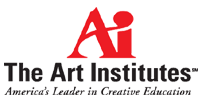 As counterpoint to the AAU, which sounds like the monster that ate Frisco, consider the chain called The Art Institutes, “a system of over 50 schools throughout North America.” (“I am a creative warrior,” their hype goes. The mind boggles.) As it happens, intensified federal regulation of these questionable enterprises has thrown the industry as a whole into a tailspin — not just the art-ed sector but all the many disciplines its vendors exploit. (See “Vanishing Profit, and Campuses” by Paul Fain, published by Inside Higher Ed on May 7, 2015. See also David Halperin’s “Report Exposes For-Profit College Abuses in Converting to Non-Profits,” concerning the latest twist in this scam, published on October 6, 2015 by Republic Report. It summarizes Robert Shireman’s chilling October 6 investigative report for The Century Foundation, “The Covert For-Profit: How College Owners Escape Oversight through a Regulatory Blind Spot.”)
As counterpoint to the AAU, which sounds like the monster that ate Frisco, consider the chain called The Art Institutes, “a system of over 50 schools throughout North America.” (“I am a creative warrior,” their hype goes. The mind boggles.) As it happens, intensified federal regulation of these questionable enterprises has thrown the industry as a whole into a tailspin — not just the art-ed sector but all the many disciplines its vendors exploit. (See “Vanishing Profit, and Campuses” by Paul Fain, published by Inside Higher Ed on May 7, 2015. See also David Halperin’s “Report Exposes For-Profit College Abuses in Converting to Non-Profits,” concerning the latest twist in this scam, published on October 6, 2015 by Republic Report. It summarizes Robert Shireman’s chilling October 6 investigative report for The Century Foundation, “The Covert For-Profit: How College Owners Escape Oversight through a Regulatory Blind Spot.”)
They should carve caveat emptor over the front doors at AAU, methinks. But that’s long been true of all post-secondary art-education and photo-education providers, non-profit and for-profit alike. They have glutted the market with wannabes for whom the real world has no use whatsoever. If that weren’t so obvious, and so easy to discover on one’s own with minimal research, I’d feel sorrier for those who have swollen the coffers of Ms. Stephens and her family while receiving nothing in return. This way to the Egress.
(Postscript, April 11, 2016: “Citing ProPublica’s reporting, twelve attorneys general called on the federal Department of Education to revoke the recognition of the quasi-regulator [of for-profit colleges]. … Twelve state attorneys general have asked the federal Department of Education to revoke the recognition of the much-criticized Accrediting Council for Independent Colleges and Schools. … If ACICS loses recognition, the many for-profit schools that it accredits could be cut off from the federal student aid that makes up the majority of their income.” Click here for the April 11, 2016 ProPublica report by Annie Waldman).
The Decline and Fall of Higher Ed
 More to ponder while kicking off the semester: “Most College Students Don’t Earn a Degree in 4 Years, Study Finds,” as Tamar Lewin reported in the December 1, 2014 New York Times.:
More to ponder while kicking off the semester: “Most College Students Don’t Earn a Degree in 4 Years, Study Finds,” as Tamar Lewin reported in the December 1, 2014 New York Times.:
“At most public universities, only 19 percent of full-time students earn a bachelor’s degree in four years, the report found. Even at state flagship universities — selective, research-intensive institutions — only 36 percent of full-time students complete their bachelor’s degree on time.
Nationwide, only 50 of more than 580 public four-year institutions graduate a majority of their full-time students on time. … The problem is even worse at community colleges, where 5 percent of full-time students earned an associate degree within two years, and 15.9 percent earned a one- to two-year certificate on time.”
(Click here to download a free PDF file of “Four-Year Myth,” the Complete College America report on which Lewin’s story is based. See also Annie Waldman’s September 24, 2015 ProPublica report, “New Data Reveals Stark Gaps in Graduation Rates Between Poor and Wealthy Students.” Finally, click here for freshman Belle Knox’s March 4, 2014 article, “I’m Finally Revealing My Name and Face As the Duke Porn Star,” explaining why she turned to that business model to subsidize her college education.)
It gets better. Lewin goes on to write, “Each year, the report said, 1.7 million students begin college in remediation, including a majority of community college students — but only one in 10 remedial students ever graduate.” In short:
- social promotion resulted in those 1.7 million students getting certified by their high schools as college-ready when they weren’t;
- the presumably rigorous college admissions gauntlet somehow failed to detect that they were woefully unprepared (or else the higher-ed industry is so desperate for clients that they’ll let anyone in);
- with the result that enough students to populate the city of Philadelphia, PA — plus enough to spare to populate Providence, RI — enter public college in order to spend their tuition money (or, more likely, to accumulate student debt) learning what they should have learned in (presumably public) high school.
(Click here to download a free PDF file of “Remediation: Higher Education’s Bridge to Nowhere,” another Complete College America report. Click here for Princeton University professor David A. Bell’s July 29, 2014 New Republic op-ed, “Making Money Shouldn’t Be the Purpose of a College Education,” and here for Annie Waldman and Sisi Wei’s Pro Publica September 15, 2015 report, “Colleges Flush With Cash Saddle Poorest Students With Debt.” And click here for Bourree Lam’s December 19, 2014 article in The Atlantic Monthly, “M.F.A.s: An Increasingly Popular, Increasingly Bad Financial Decision.”)
And where social promotion doesn’t do the trick, we have outright grade fixing at the secondary-school level. See Susan Edelman’s June 28, 2015 New York Post report, “City ‘fixes’ grades for failing high school students”; her July 5, 2015 follow-up, “City didn’t tell state it changed grades for failing high school students”; and Kirstan Conley’s September 22, 2015 follow-up story in the same newspaper, “NYC isn’t the only place in New York with a grade-fixing problem,” for details. Welcome to Lake Wobegon, where all the children are above average.
•
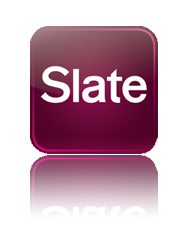 But wait — there’s more! If this makes it seem that things are bad for college students today, and thus bad for their teachers, consider the new imperative: the omnibus syllabus. According to Rebecca Schuman’s “Syllabus Tyrannus,” published in Slate on August 26, 2014, post-secondary schools now expect faculty to provide syllabi for their course so detailed that they can run 20-25 pages. Long gone are the days of the one-, two-, or (rarely) three-paragraph course synopsis in the college catalog; nowadays a truth-in-packaging approach runs rampant, with the spelling out of every detail of every course mandated.
But wait — there’s more! If this makes it seem that things are bad for college students today, and thus bad for their teachers, consider the new imperative: the omnibus syllabus. According to Rebecca Schuman’s “Syllabus Tyrannus,” published in Slate on August 26, 2014, post-secondary schools now expect faculty to provide syllabi for their course so detailed that they can run 20-25 pages. Long gone are the days of the one-, two-, or (rarely) three-paragraph course synopsis in the college catalog; nowadays a truth-in-packaging approach runs rampant, with the spelling out of every detail of every course mandated.
Of course, that includes “trigger warnings” about any material that might conceivably disturb the delicate psyches of college students, as well as strict regulations concerning the language their teachers will allow them to use — forbidding such locutions as “male” and “female,” for example.
Indeed, to increase an atmosphere of “inclusivity” on campus, some schools — like the University of Tennessee — advocate replacement of traditional English-language singular pronouns. As alternatives, they recommend substituting plural pronouns, encouraging such locutions as “Steve’s my steady now, so they and I walk around hand in hand,” “Gloria was all alone and wanted to join us, so I pulled up a chair for them,” and “I found a book on the floor after class, and Tiffany claimed it, but I knew it wasn’t theirs.” Or you can switch over to newly minted gender-neutral pronouns: xe, xem, and xyrs, for example.
The post-secondary system has gone stark raving mad. On this, if on nothing else, Dr. Ben Carson is right: Get yourself a library card. Then bank the money you would spend on college tuition, or invest it carefully. And hack your education.
•
[Postscript, November 1, 2015: If you think I’m less than sanguine, read “The Overproduction of Intelligence: The Reshaping of Social Classes in the United States” by Gary Roth, in the October 5, 2015 issue of The Brooklyn Rail. Roth “is a former Vice Chancellor and Dean at Rutgers University-Newark, where he now teaches.” His closing paragraph:
“The situation for college graduates has been dim for some time already. For the past twenty-five years, e.g. for nearly two decades prior to the economic crisis of 2008, the rate of underemployment for all college graduates between the ages of 22 and 65 held steady at just under one-third. Since the Great Recession, an additional ten percent find themselves in these straights [sic]. This is higher education’s dirty little secret — a substantial portion of the graduating class is on its way down, just like the substantial portions of the graduating classes that preceded it.”
Roth writes about college grads in general, not those with BFAs and MFAs. If the numbers look that dismal for the aggregation of all academic disciplines, they can only get worse, much worse, once you isolate the art students. — A. D. C.]
[Postscript, August 30, 2016: For a closer look at the relationship between art-school degrees and art-school success, see “Is Getting an MFA Worth the Price?” by Ben Davis, at Artnet. Relying on a “a list of the 500 most successful American artists at auction … looking at figures born in 1966 or later,” this article offers a careful analysis of the correlation between art-world success (measured in secondary market sales), academic history (how far each artist went in art school, if at all), and the specific school(s) attended, if any. Spoiler alert: Going anywhere except Yale, UCLA, or Columbia was — from a strictly careerist standpoint — most likely a waste of time and money. — A. D. C.]


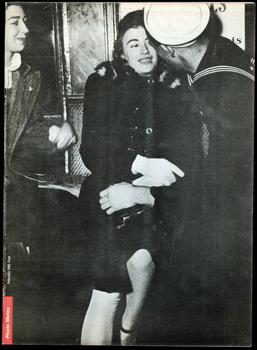
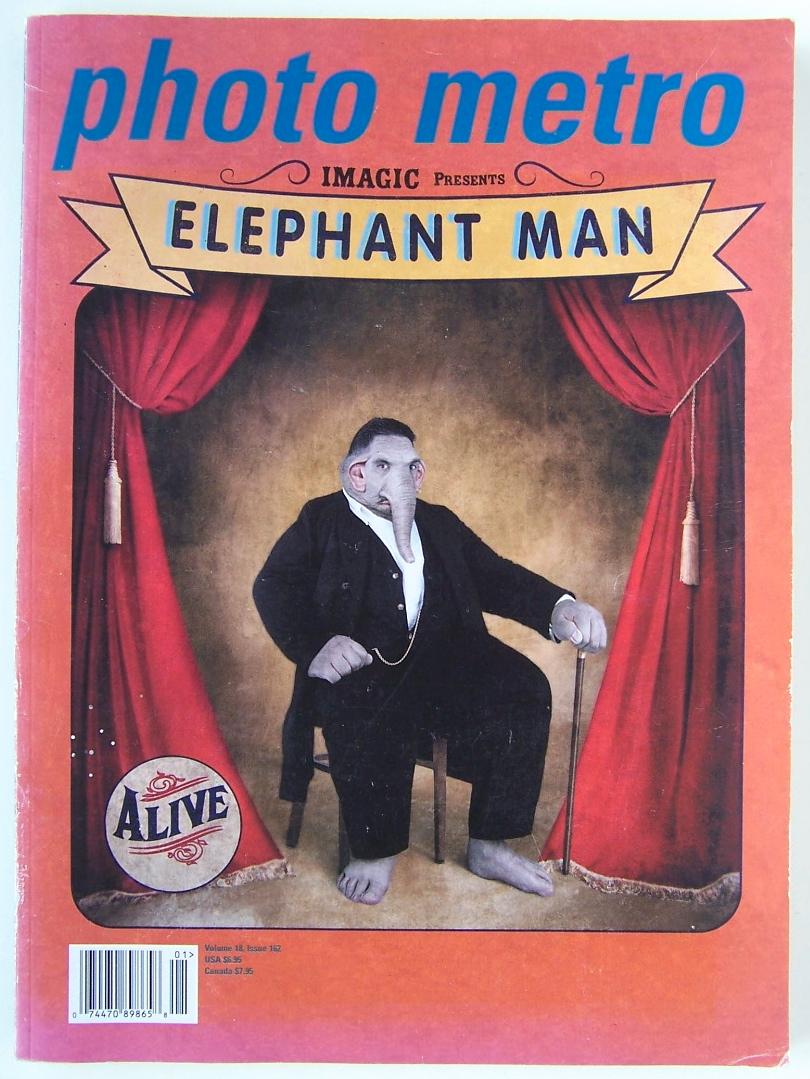
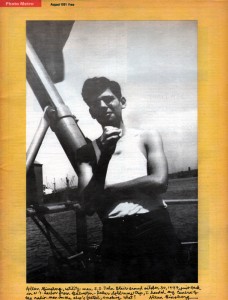
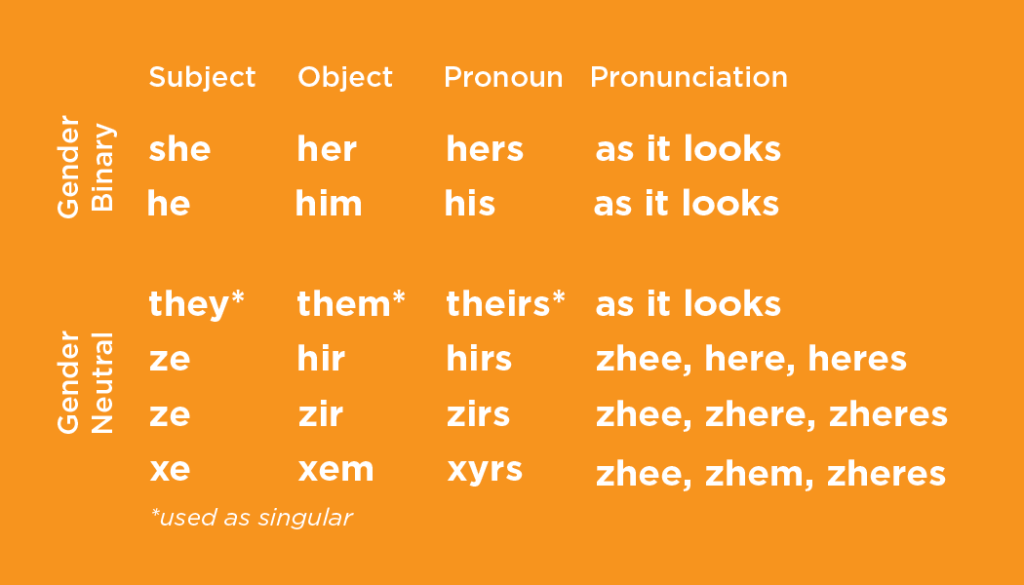




When I was a kid, in my great aunt’s attic, I found the correspondence course for becoming a professional illustrator. This was the original “for profit” art education, advertised nationally with those funny little ads that said ‘Can you draw this?”
Norman Rockwell was one of the instructors, and the big, heavy manual came with his drawings reproduced on translucent drafting paper fold outs for the student to study and trace. I learned a lot from that correspondence course; eventually being accepted into a real art school (Pratt) at 17.
The AAU did not start out as a fraud, as it fell within the world of advertising/design trade education that the correspondence course also occupied, but under the leadership of the founder’s son and granddaughter it has become a full fledged rip-off operation that has spawned a rapacious real estate empire and supports the extravagant lifestyle of its owners.
Exploitation of unfulfilled dreams is the huckster’s classic business model, so it comes as no surprise that contemporary art has provided a perfect opportunity for fraud to flourish. Today the idea that virtually anyone can be an artist is the fault of the art world itself, as it replaced technique with gimmick, talent with artifice, and integrity with popularity.
Painting, drawing, photography and architectural design are quickly becoming lost art forms, no longer originating from a trained mind, to eye, to hand, to paper/canvas/stone/wood/copper, etc. As visual expression becomes increasingly automated and reductive, and the art world as vapid as it is greedy, art education follows that same trajectory. In such a case, less is NOT more.
May I add a link to that old New Deal publication, the Washington Monthly?
“Diploma mill” only describes colleges awarding sheepskins for insubstantial learning and work. “Dropout factory” describes colleges enrolling under-prepared poor and working-class students, providing them with scant support and resources, collecting all their financial aid, and watching them drop away when the money runs out.
See http://www.washingtonmonthly.com/college_guide/rankings_2010/dropout_factories.php
Hi, Allan,
Seems hard to find news other than appalling about education nowadays- but your digging into it appreciated. Of many things that come to mind, four stand out: 1, in 1955, when I started at UC Berkeley, I guess the culture valued an educated citizen enough to pay taxes that permitted a semester’s tuition of about sixty bucks. Nowadays a crazy number, even inflation adjusted. I graduated with no debt, true of most then, I think. 2, I have somewhere a catalog for Montclair State from about that period- holding my fingers apart to remember its thickness, I think it was about 1/3 inch. 3, as a member of the first class at the VSW, tuition was waived. I kind of thought I would enter the field of photography, but there were no job promises nor career counseling. Good networking, tho, Nathan’s MO. 4, you may recall at the recent Baltimore SPE conference that there was a promise of a walkthrough of curators and the like for professionals. Students, however, got wind of it and commandeered every square inch, including the floor. No surprise. What especially struck me was that every single student had polished portfolios at the ready and business cards with information about their websites.
When I started teaching at Ramapo forty years ago, my syllabi were more or less one page mission statements, but over the years, pestered by students and deans, they morphed into what became the enforced standard format, accounting for each day’s activities. Including project descriptions and illustrations, they did reach your upper number of pages. Little changed in the classroom, tho. Some teacher friends recently bemoaned the fact that few of their graduates fulfilled their artistic promise, i.e, earned money in art- altho those digitally most adept had the best chance at a job- to work on others’ images. As you note, there are many artists in excess of the demand for them. For me, if a student becomes a good citizen and my teaching in some way contributed, fine. The commonly observed point that a receptive and informed viewer is necessary for art to have affective and cultural value, even momentum, has been central to my teaching. Boiled down, I taught, or tried to: Be responsible. Pay attention. Cultivate empathy.
What I take from all this, no surprise, is a foredoomed emphasis on the monetary, professional training aspects of education currently embraced by many. However, artistic education/practice understood as a focus, or at least a component of the languishing ideal of a liberal arts education, might even become a hot new idea. Having retired from teaching in ’07, I can indulge in the luxury of idealism.
Thanks for keeping up your conversation online. I do follow you. I am, tho, kind of done with Capa.
Best,
David
I started a bit later than you, Hunter College, Fall 1960. But I believe my entire college education, from Hunter (1960-64, B.A.) through San Francisco State College (1965-67, M.A.) cost under $1K total for tuition, books, and all other fees.
I do understand Capa fatigue, and admire those who have stuck with us on this so far. Barring any unexpected developments, we will wrap up that investigation this fall, interspersed with posts on diverse other matters. We have some good things on the Capa front coming, so I encourage you to give them the once-over before passing them by.